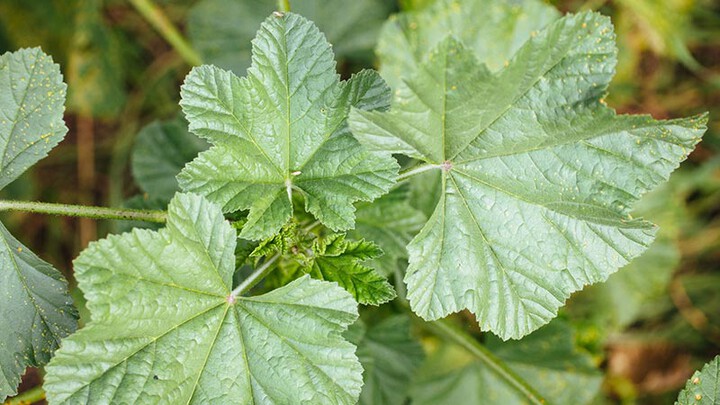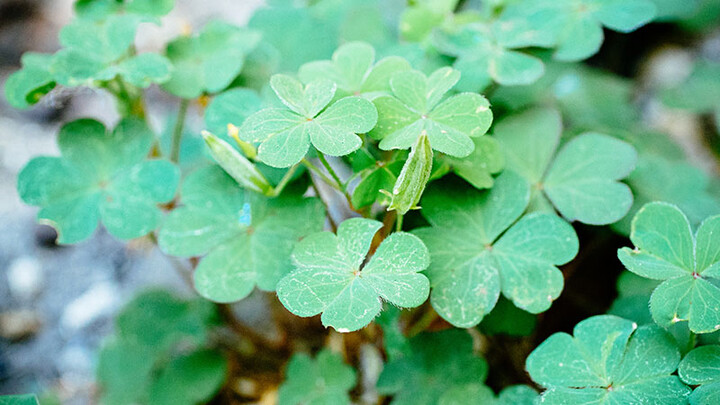Weeds are both discouraging and disappointing when they pop up unannounced and uninvited in well-cared-for yards. Learn how to identify the main types of weeds that tend to spread. More importantly, find out how to get rid of them with Gilmour’s guide to weed identification. You will learn:
Common Weeds in the Garden
Dandelion (Taraxacum)
The most well-known (and perhaps most dreaded) weed is one of the first to appear in early spring. Its name, dandelion, is derived from the French dent de lion, meaning lion’s tooth – a reference to its leaves’ distinctive jagged edge. It has an earthy and slightly bitter flavor and is best harvested when leaves are young and tender. For the adventurous types, you can even make coffee from the taproot and wine from the flowers.

Sow Thistle (Sonchus)
Common yard weeds known as sow thistle are often mistaken for dandelions. But this lookalike just resembles the other yellow garden pest when it is young. As it matures, arrow-shaped leaves become more prominent and pricklier, and they continue to grow all the way up the stem. Each stem eventually terminates in a cluster of yellow blooms, rather than a single flower like a dandelion. The leaves, flowers and roots are all edible, but the flavor is less bitter when the plant is harvested early.

Mallow (Malva)
This easily recognizable weed starts popping up in cool, damp areas in late winter to early spring. Its geranium-shaped leaves have lobes of five or seven, but its most defining characteristic is one that it is also named for: a fruiting head that looks like a miniature wheel of cheese. This is why some gardeners call it the cheeseweed. The plant’s extremely mild flavor means the leaves will taste like whatever it is cooked or dressed with. Harvest when young for the best texture.

Fennel (Foeniculum vulgare)
Though it is considered an invasive weed on the coast of California, fennel does have some redeeming qualities. The umbrella-shaped flower clusters attract bees, butterflies and other pollinators, and the plant is a natural habitat for anise swallowtail caterpillars. The entire plant is edible, including the bulb, stems, fronds, flowers, pollen and seeds. Harvest seeds while they are still green and juicy to add a fresh anise flavor to food.

Wood Sorrel (Oxalis)
Also known as common yellow oxalis (as it has delicate yellow flowers), wood sorrel is sometimes mistaken for clover due to its three-leaf shape. There is an easy way to tell the difference, though. The leaves on wood sorrel are heart-shaped with a crease down the center, while the leaves on clover are rounded and flat. Wood sorrel has a flavor that is bright and tart, and a handful of leaves steeped in water can make wood sorrel “lemonade.”
Evening Primrose (Oenothera biennis)
Evening primrose is native to the central and eastern parts of the country but can be found in parts of the southern hemisphere as well as Europe, too. As the name suggests, evening primrose blooms in the evening hours. It produces yellow, flowery delicate petals that come from a tall spike. After noon each day, the blooms close back up. Birds love the seeds from evening primrose, and nearly all parts of the plant, including the blossoms, buds, leaves, seeds and even the roots are edible.
Purslane (Portulaca oleracea)
Despite being largely unwanted in the garden, purslane is known to be one of the more nutritious plants that grow. The succulents have glossy leaves and it is native to Persia. Pink to red stems and yellow flowers make this unique weed easy to spot. Purslane can grow virtually any time of the year and can be harvested and eaten as a leaf vegetable. Stems, flower buds and leaves are all edible and they have a salty, slightly sour taste. Use purslane in soups and stews or in salads or cooked or stir-fried. Harvest early mornings.
Queen Anne’s Lace (Daucus carota)
Also known as wild carrot, Queen Anne’s lace is native to southwest Asia and parts of Europe. It eventually was naturalized to Australia and North America, where it grows in abundance. Some states have identified it as a noxious weed, but it is a great companion plant to tomatoes, lettuce and blueberries. Pretty, lacey blooms cluster in flat umbels, which spread into multiple flower stalks stemming from the same point.
Red Clover (Trifolium pratense)
This short-lived plant has a deep root system that makes it more drought tolerant than some other weeds. It has dark pink flowers that are loved by bumble bees, making it a great pollinator. Native to Western Asia, Northwest Africa and parts of Europe, red clover was naturalized to both North and South America. Grown as a fodder crop, which is a crop that animals eat, it is what’s known as a “beneficial weed.” It has edible leaves and flowers that can be ground into a flour or used as garnish. Some people even make jelly with the blooms.
Foxglove (Digitalis)
Foxglove is a striking tall-growing plant with spikes that bloom colorful tubular flowers. Since it is such a pretty plant, it’s surprising to some that it is so toxic. Native to Western and Southwestern Europe and parts of Asia and Africa, Foxglove blooms first appear in early summer, but sometimes more stems will show later in the season, particularly when the plant is pruned regularly.
Poison Ivy (Toxicodendron radicans)
Known for the irritating, sometimes painful, itchy rash it gives when people come in contact with it, this unwanted plant is not a true ivy. It is a member of the pistachio and cashew family. The plant is eaten by animals, and birds like the seeds, but it is not for human consumption. It can grow as a climbing or trailing vine or as a shrub that grows nearly 4 feet tall.
Willow Weed (Persicaria lapathifolia)
Willow weed is considered a weed in Europe and Britain. This annual has reddish stems and droopy leaves with a hairy underside. Tiny hot pink flowers look similar to primrose, but this highly adaptable plant is challenging to control as a result of its ability to quickly spread.
Barnyardgrass (Echinochloa)
A member of the grass family, Barnyardgrass is largely an unwelcome garden addition as a result of its tendency to grow and spread rapidly. It looks similar to crabgrass and is known to be a thief, taking nitrogen and other important nutrients from gardens and yards. Barnyardgrass generally shows up in the heat of summer, around August, and it has thin stems with shooter leaves that protrude out from the main stem. Its maroon base is a clear sign of what is growing.
How to Control and Remove (or Harvest) Weeds
One of the best defenses against weeds overtaking your landscape is to mulch garden beds well. Add a 3-inch layer of organic mulch like straw or shredded bark over the bed, leaving a few inches of breathing room from the stems of plants. Placing mulch directly against the stems can hold excess moisture and promote rot. Replenish mulch as needed throughout the season to ensure it is spread evenly and thickly enough to smother weed seeds.
If weeds manage to break through the mulch, removing them (or pulling edible ones up for dinner) is a good first step. Then simply saturate soil with a thumb control watering nozzle and Flexogen Super Duty hose and let the water soak in a few inches. Moist soil will make it much easier to remove the entire plant (taproot and all), especially if heavy clay is part of the soil. You can also wait to weed until after a good rain, which will help release weeds with hardly any effort at all.
Troublesome weeds can be annoying to deal with, but it really is worth it to tackle them head on. Take care to prevent, identify and remove weeds as necessary so you can keep your lawn and garden as beautiful as possible throughout the growing season.